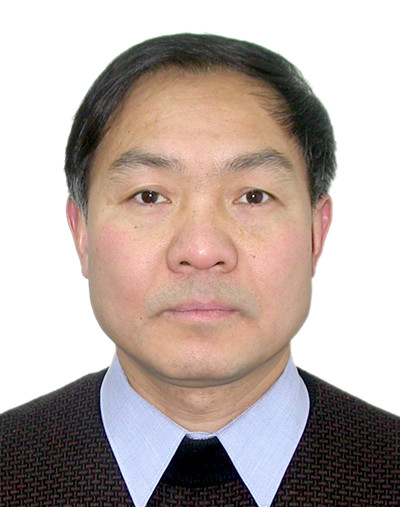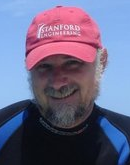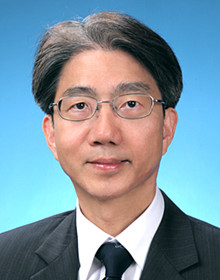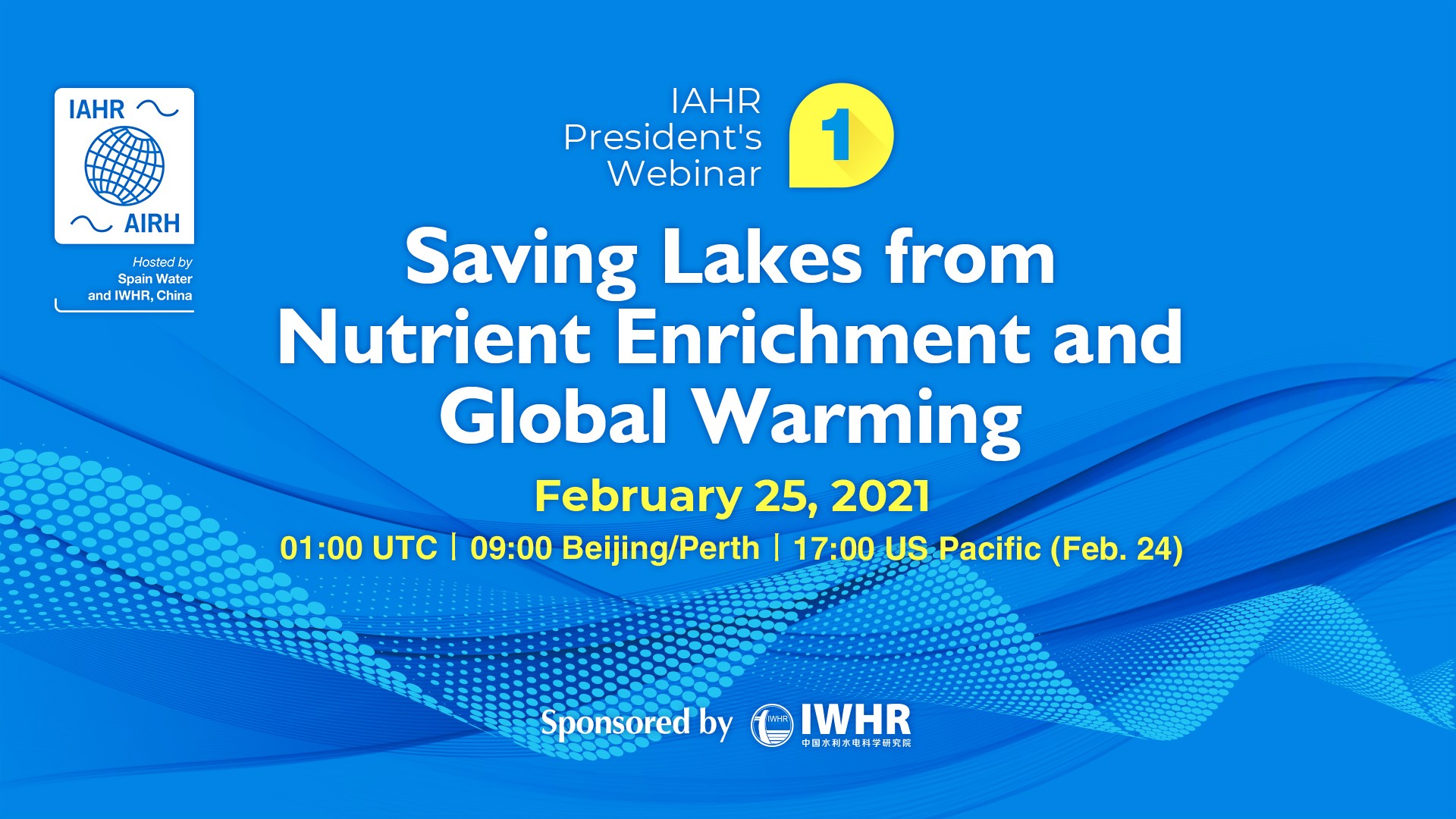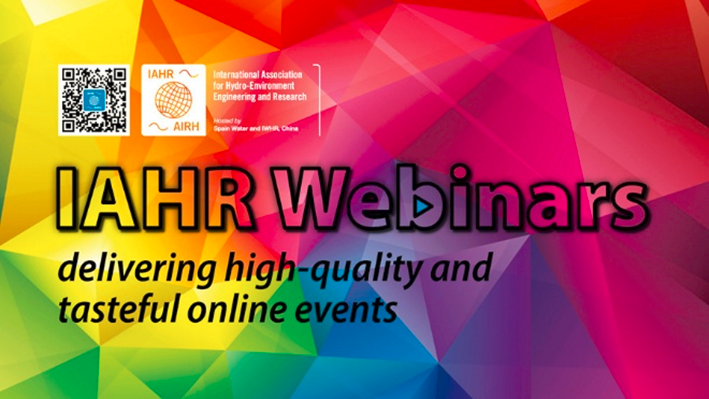2nd IAHR Presidential Lecture

2nd IAHR Presidential Lecture
Coordinated Sensing Across the Entire Hydro-Environmental Scale Spectrum
Sunday, Dec. 4 (Americas) | Monday, Dec. 5 (Other Continents), 2022
LIVE Page Access
Click the following link to go to the LIVE page where the online event will be live-streamed for free.
Live-streaming is free and accessible for all. However, you will need to log in to request your certificate of participation during the lecture (learn more).
Speakers
We are honored to have some of the world's top scholars and researchers in the webinar:
Harindra Joseph Fernando
University of Notre Dame, US
Peng CUI
Chinese Academy of Sciences
Stephen Monismith
Stanford University, US
Chair
Joseph Hun-wei Lee
IAHR President
Time in Different Zones
This event will be organized on Monday, December 5, 2022 in Asia Pacific, Africa and Europe but will be on Sunday, December 4, 2022 in the Americas. It will start at
20:00 (New York/Lima, UTC-8) on Sunday, December 4
01:00 (UTC/GMT) on Monday, December 5
02:00 (Madrid/Paris, UTC+1) on Monday, December 5
09:00 (Beijing/Singapore, UTC+8) on Monday, December 5
Program
Introduction (5 mins)
Joseph Hun-wei Lee | President, IAHR; President, Macau University of Science and Technology, China
Keynote Lecture (60 mins)
Harindra Joseph Fernando | Wayne and Diana Murdy Endowed Professor of Engineering and Geosciences, University of Notre Dame, USA
Coordinated Sensing Across the Entire Hydro-Environmental Scale Spectrum
Invited Talks (30 mins each)
Stephen Monismith | Obayashi Professor in the School of Engineering, Stanford University, USA
Observations of Variability of Mixing Efficiency in Stratified FlowsPeng CUI | Academician, Institute of Mountain Hazards and Environment, Chinese Academy of Sciences, China
The 2022 Mega-flood in Pakistan
Discussion and Q&A (30 mins)
Abstract of Prof. Fernando's Lecture
Earlier developments in hydro-environmental research were mainly grounded on the discovery of individual fundamental process underlying fluid motion, their intense observational, experimental, and theoretical study, and application of knowledge ensued to develop models to predict environmental motions at different scales. Myriad of instabilities and waves, turbulence, jets, plumes and thermals, clouds and fog, precipitation, geostrophic and ageostrophic flows are examples in the realm of fundamental processes. With the advent of space travel and satellite imagery in the late 1960’s, however, a holistic view of environmental fluid motions on the earth began to emerge. Newer technologies sharpened the observational resolution, enabling verification of processes identified and theories developed in fundamental studies. For example, baroclinic and barotropic instabilities adumbrated by sparse ground observations were now clearly identifiable in weather satellite imagery. In addition, more recently, novel instrument platforms have been deployed to elucidate how cascading of dynamic and thermodynamic properties of large scale motions of tens of thousands of kilometers introduced by radiative and gravitational forcing break down via nonlinear processes into smaller scales. This cascade creates a myriad of phenomena that are modified by terrestrial boundary influence. The smallest of all motion scales is where turbulent energy dissipation occurs (i.e., Kolmogorov scales), although yet smaller scales of consequence exit in the scale continuum. Some examples are the scalar (e.g., moisture, temperature, salinity) dissipation scales and droplets of micron scales developing on still smaller atmospheric aerosols that are responsible for fog near the ground surface and clouds aloft. In a series of recent field campaigns, dubbed C-FOG in 2018 and Fatima in 2022, attempts were made to delve in to a wide spectrum of atmospheric processes, from large-scale weather systems to sub-micron scale fog droplets, using an assortment of instruments to cover fifteen decades of spatial scales. The aim was to understand how temperature, humidity and velocity fluctuations of weather systems cascade down to form marine fog. The two projects utilized satellite products and rawinsoundings for macroscales, a bevy of remote sensors such as W-band radars and Doppler lidars for mesoscales, and in-situ and remote sensors for microscales. The instruments were located on research vessels, on an isolated island in Atlantic (Sable Island) and in the coastal land of Newfoundland, Canada. Emerging results from these field studies will be discussed in the context of multiscale processes underlying marine fog formation. The design of these field campaigns exemplify coordinated sensing of the hydro-environment across a wide swath of scales.
Abstract of Prof. Monismith's Talk
Many water bodies of interest to engineers, e.g., lakes and estuaries, are stratified. While it is well known that density stratification increases flow stability and thus reduces turbulent mixing, accurate parametrizations of these effects for use in predictive models remain elusive. In this talk, I will discuss one aspect of this problem: the efficiency with which turbulence converts turbulent kinetic energy (TKE) to irreversible changes in potential energy of the flow, i.e., mixing of the scalar(s) producing stratification. Using field observations of turbulent mixing drawn from studies of the nearshore coastal ocean and from several sites in the San Francisco Bay/Delta, I will show that structurally different flows produce different relationships between mixing efficiency and several non-dimensional parameters, notably turbulent Froude numbers based on overturning scales or on TKE, the buoyancy Reynolds number computed using the rate of TKE dissipation, and the Richardson number calculated using mean velocity shear and stratification.
More Information
How to Participate: No application to be installed. Simply go to the LIVE Page to watch, comment and ask questions.
Registration: No registration needed, but we can keep you updated and reminded. You will receive the reminder before the webinar start 1 week, 1 day and 1 hour ago.
Certificate of Participation: A link will be clickable on the LIVE page during the webinar (click here to know how). Anyone requesting a certificate, issued by IAHR, will have to register their request there.
Playback: There will be no playback for this event. However, once uploaded into the IAHR Video Library, the video clips will be accessible for free for a month for the IAHR members.
Related Events
2021-02-25
2020-2022

